Bartholomew Rivers was a merchant from Dungarvan. He became a successful businessman in Waterford City in the late 1700’s, but he’s best remembered in Tramore. Rivers saw potential in the small village by the sea, so much so he began investing in and developing the town.
As you enter Tramore, the second roundabout you encounter, with Tramore GAA club beside it, is an area called Riverstown. Named after Bartholomew. In 1793 he went bust, and after that he saw out his days quietly in Tramore until his death in 1809.
Not only do I live in Riverstown, but my father was from Waterford City, and my mother is from Dungarvan. They too made their home in Tramore. A triangle of ancestry with an apex in Trá Mhor, the town by the Big Beach. It shouldn’t be at all surprising that one of my favourite cycles on our island covers much of that triangle.
The video above is a solo cycle from Tramore on the eastern side of county Waterford to Goat Island on the west side of County Waterford. There are only a couple more beaches between Goat Island and County Cork to the west.
Although I went out for this spin on my own, Ellie, her daughter Ava, and Ava’s boyfriend Jack had set up camp on Goat Island for the night, so I knew there was a fire, a burger and a swim waiting for me on the far side of Ardmore.
It’s roughly 75KM each way from Tramore to Ardmore, with the scenic route back along the Copper Coast road being slightly longer and more challenging. There are a few steep hills along the way, but they’re all doable and they are all pretty short. There are no long mountain climbs. The payoff is that there are plenty of swimming opportunities along the way.
I set out along the road from Tramore to Kilmeadan, went straight across the N25 at the crossroads and joined Waterford Greenway from the entrance at the back of Mount Congreve Gardens.
Myself and Ellie consider ourselves very lucky to have had some weird and wonderful work projects bring us to some interesting places in Ireland, places we might not have otherwise visited. It was a relatively straightforward assignment for Ellie to go and report on the opening of the Waterford Greenway in March 2017 for The Irish Examiner. I happily tagged along. Truth be told, we’d been eagerly cycling sections of it even before they were fully paved.
It’s estimated that somewhere in the region of 10,000 people were on Waterford Greenway that day it opened. They were in high spirits. If you give Waterford folk something positive to be proud of, they will get behind it in numbers. The cyclists that day, some of them very wobbly on their bikes, were brimming with pride. We’re still proud of it. Stop and ask anyone in Kilmacthomas what the Greenway has done for the town and they’ll burn the ear off you.
Would the reopening of the rail lines between Waterford and Lismore, along with the connecting line from Youghal to Cork, have had a greater economic and environmental impact? That is a topic that Ellie is writing about right now, due to be published in The Examiner later this week. It will be interesting to read, but I’d lay good money that the majority of Kilmac folk would choose the Greenway every day of the week.
Part of what’s interesting about the pride that us Waterford folk have for the Greenway is that it’s history is rooted in British colonialism. The rail line that the Greenway was built on was funded almost entirely by the Duke of Devonshire, the lad whose ancestors still own and occasionally reside in Lismore Castle. Peregrine Andrew Morny Cavendish, 12th Duke of Devonshire, KCVO, CBE, DL is the current one. If you fish along the Blackwater, it’s Peregrine Andrew Morny Cavendish who gets the fees from your permit.
It always sticks in my craw that there is still a British peer living in a castle in county Waterford, earning money from the land and river around the castle. In a situation very similar to a scene from Monty Python’s The Life of Brian, a voice in my head asks “What did the British ever do for us?” A much weaker voice answers itself by saying “Well, they built the railways.” How Waterford Greenway weighs up against 800 years of murder and oppression is a whole other question.
Whatever view you take of Peregrin’s great grandaddy, he bankrolled the Waterford Lismore Railway, the most expensive railway in the country at the time, the National Children’s Hospital of its day. It needed three large stone viaducts at Kilmacthomas, Durrow and Ballyvoile. The level crossing at the causeway in Dungarvan was said to be the longest gate crossing in Europe. The section of the rail line that ran along the river Suir beside Mount Congreve needed a shelf of rock built on the bank of the river to accommodate it. A tunnel a quarter of a mile long was dug, blasted and built from brick through the rock at Ballyvoile. All these architectural features can still be seen today and are part of what makes the Greenway so impressive.
Well almost all of them can still be seen today. In 1923 the stone viaduct at Ballyvoile was blown up by Republicans. The viaduct at Ballyvoile today is a steel bridge on concrete pillars that replaced the remains of the damaged stone structure. It’s an area with history. On the Dungarvan side of that viaduct is a memorial to Jack Cummins who was shot and killed by a British Army ambush in that spot in 1921. Cummins may well have been in the mind of those who blew up the viaduct and forced a train off the edge of it two years later.
The tunnel at Ballyvoile is one of the highlights of the Waterford Greenway. No matter what time of year you cycle into it, you’re always hit by the temperature that remains cool in summer and mild in winter. It’s hard to believe that for thirty years the tunnel was flooded and overgrown. It’s a magnificent structure, and even though there are signs asking cyclists to dismount, if you get a clear run at it with no pedestrians, on the downhill slope heading towards Dungarvan, it is incredibly fun to cycle through.
If you’re tempted to sing a song while in the tunnel, to enjoy the acoustics of the space, consider singing a Kate Bush song. Her mother, Hannah Daly, was originally from Ballyvoile. A song called the Ballyvoile Ambush, that recounts the tale of how Jack Cummins was killed, was written by Jack Daly, Kate Bush’s grandfather. Do you think she knows the words? Better still, do you think someday she might pull off an Alan Partridge move and sing it on a TV chat show?
The architecture along the Waterford Greenway is impressive, but the stretch of coastline that opens up before you not long after you cross over the Ballyvoile viaduct heading towards Dungarvan is breath-taking. This part of the Waterford coastline at Clonea is known as the Gold Coast.
Dungarvan has always been a bustling market town, and the Greenway has enhanced that. Dungarvan established itself as something of a culinary destination with the Waterford Festival of Food taking place in the town in late April each year. TV chef Paul Flynn and his wife Máire have been running the Tannery restaurant in the town for almost 30 years.
On the first leg of the journey to Goat Island I was racing against the sunset, so although it isn’t the most pleasant route, I stuck to the N25 from Dungarvan right up as far as Kiely’s Cross. Unfortunately the pub at Kiely’s Cross has been closed for a few years now, but it still bears the proud sign “The Conversational University of Grainge” above the door. It’s for sale if you feel like reopening the cathedral of learning.
The round tower at the ruins of Ardmore Cathedral boasts of being one of the best-preserved round towers in Ireland. It was built in the 12th century. The building was not bank rolled by the Duke of Devonshire. The area is steeped in folklore that surrounds St. Declan, and some of that folklore owes more to pagan ritual than it does to Christian beliefs.
While some folks head to Ardmore for the lavish offerings of the five-star hotel and Michelin star restaurant at Cliff House, I’d be much happier to head past the hotel, out along the cliff walk. The cliff walk will take you to St. Declan’s well and church. Declan is meant to have set up camp here in Ardmore in 416AD. St. Patrick is said to have called down to him for a visit not too long after that. The well at this site is belived to have been the spot that Declan baptised people, and the curative powers of the water here became the stuff of legend.
In 1936 the Dungarvan Observer ran a story that said “A young local man writes stating that on his first visit to St. Declan’s Blessed Well at Ardmore he was cured of an ailment which the doctor had failed to cure. He exhorts people to visit the Holy Well on July 23rd and 24th each year.”
There had long been a festival held in Ardmore on these dates, a festival that the catholic church tried to ban because of its pagan leanings. Up to recently the festival was still running. Expect to join a long queue if you visit the well during the last week of July. I’ve dipped, dabbed and soaked several different parts of myself in the waters and it hasn’t done me any harm at all. Whether it’s done me any good is up for debate.
If you venture further out along the Cliff Walk you’ll pass the wreck of the Samson, and beyond that is Ram Head with its two viewing towers. One tower dates from the Napoleonic Wars and the other dates from World War II. Today this spot is a favourite haunt of the Irish Whale and Dolphin Group who use this vantage point to keep lookout for migrating whales that pass our southern shores.
Many years ago I worked for Waterford Local Radio. One of several times I got into hot water for discussing things on-air that aggravated management of the station was at an outside broadcast in Ardmore. I diligently went up to the village the day before the outside broadcast to get a feel for what the townsfolk wanted to talk about.
We talked about St. Declan, the cliff walk, the round tower, but that wasn’t what was animating locals. The outside broadcast was being paid for by Cliff House Hotel, by way of advertising their grand opening. What the locals really wanted to discuss was how expensive a pint of Guinness was in the swanky new hotel. It was very expensive. So that’s what we talked about on air. The hotel investors were not impressed. One of the investors was a friend of the radio station owner. I’m pretty sure that discussing the extortionate price of pints in the sponsors hotel was my strike one. Unsurprisingly the next two strikes followed not long thereafter. I was never destined for a career in commercial radio.
My destination for the first leg of this cycle was Goat Island, one of the lesser known scenic spots on the Waterford coast, a couple of kilometres west of Ardmore. Sure enough, as I made the descent down to the beach, with the sun about to set, I could smell the campfire smoke, and I knew that Ellie, Ava and Jack would have a cup of tea waiting. Straight into the water once I got off the bike and the tea was very welcome after that. Thanks lads.
We’ve been slowly building up some of the gear that we’re going to take with us around the world. This was the first outing for our new tent, sleeping mats and camping stove. We’ll probably do a separate post about what we plan to pack on our big trip, but Ellie wasn’t impressed with the sleeping mats, and we both still need to be convinced by the tent. Stay tuned for more on that.
On the spin home the next day I took the scenic route, hanging a sign posted right off the R673 a few kilometres north of Ardmore, heading for An Rinn and Sean Phobal. Tá An Rinn an Ghaeltacht i gContae Phort Láirge.
It was interesting to witness the kerfuffle last week around John Sheehan and Phil Coulter letting it be known that they’re not fans of The Mary Wallopers and Lankum. It turned into an online pile on of abuse for the former Dubliner and the lad who wrote Ireland’s Call. They’re entitled to their opinions, but the reason they’ve been knocking around together recently is to promote their new show The Dubliners Encore, a jukebox musical about The Dubliners created by Sheehan and Coulter. I have to admit I got the gawks when I saw the promo photo with John and the lads playing The Dubliners in their theatrical disco shirts.
Folk singer Liam Clancy made his home in An Rinn, and if you were ever up at a session in one of the pubs there you could bump into him. Donnchadh Gough who played with the band Danu, the band you can hear on the video published with this post, was given his first bodhrán by his neighbour Liam Clancy.
During Clancy’s career there were some who viewed the material and presentation of the Clancy Brothers, and after that Makem and Clancy, as being somewhat twee and inauthentic. Similar sentiments to those espoused by Sheehan and Coulter last week. There’s nothing new under the sun I s’pose.
A singer who couldn’t be maligned by any of them was son of An Rinn, Nioclás Tóibín. If it’s the pure drop you’re after, seek out Nioclás. He died in 1994 at the age of 66, but he made several recordings before that. In 2010 TG4 made a documentary about him called Orpheus na nDéise. In that documentary Mícheál Ó Súilleabháin talked about him as being a High King of Irish music. It was Tóibín’s voice I had in my head as I crested the hill above the village of An Rinn, looking out over Dungarvan Bay and An Coinigéar.
An Coinigéar is a narrow bank of gravel that stretches out three kilometers from the west side of Dungarvan bay, just below An Rinn, almost reaching bridgelike right across to the far side of the bay. It’s said to be a glacial deposit from the ice age. When I hear Tóibín’s voice, I can discern a sharp and clean glacial edge to it, with just a handful of gravel tossed in there when needed. Tóibín sang with the voice of The Connigar.
At Dungarvan I re-joined the Greenway until the carpark at Durrow where I exited onto the coast road to Tramore. As I mention in the video, when I was trying to impress Ellie during our first few journeys to Waterford, I made sure to drive to Tramore from Cork along the coast road. It worked. She will not thank me for writing this, but when Waterford are playing Cork in the hurling, she shouts for The Deise. She loves me county too. Cycle along the cliffs from Bunmahon to Annestown and it’s difficult not to.
There’s a couple of alternative scenic routes that are even prettier than the one I took in the video. Hang a left in Annestown to bring you up the Anne Valley, towards Dunhill Castle, by the foot of the Anne Valley Walk. Just past Fenor you could hang a right to bring you to Killfarassy and Garrus beaches before getting to Tramore. After 150KM in two days I was all puffed out of scenic detours.
I always feel incredibly lucky to be able to head off and cycle in interesting and beautiful places, but I also feel blessed with what is right on my doorstep. I’ll never tire of cycling this route, and the longer and further I am away from it, the more I look forward to coming back and cycling it again. I loves me county!




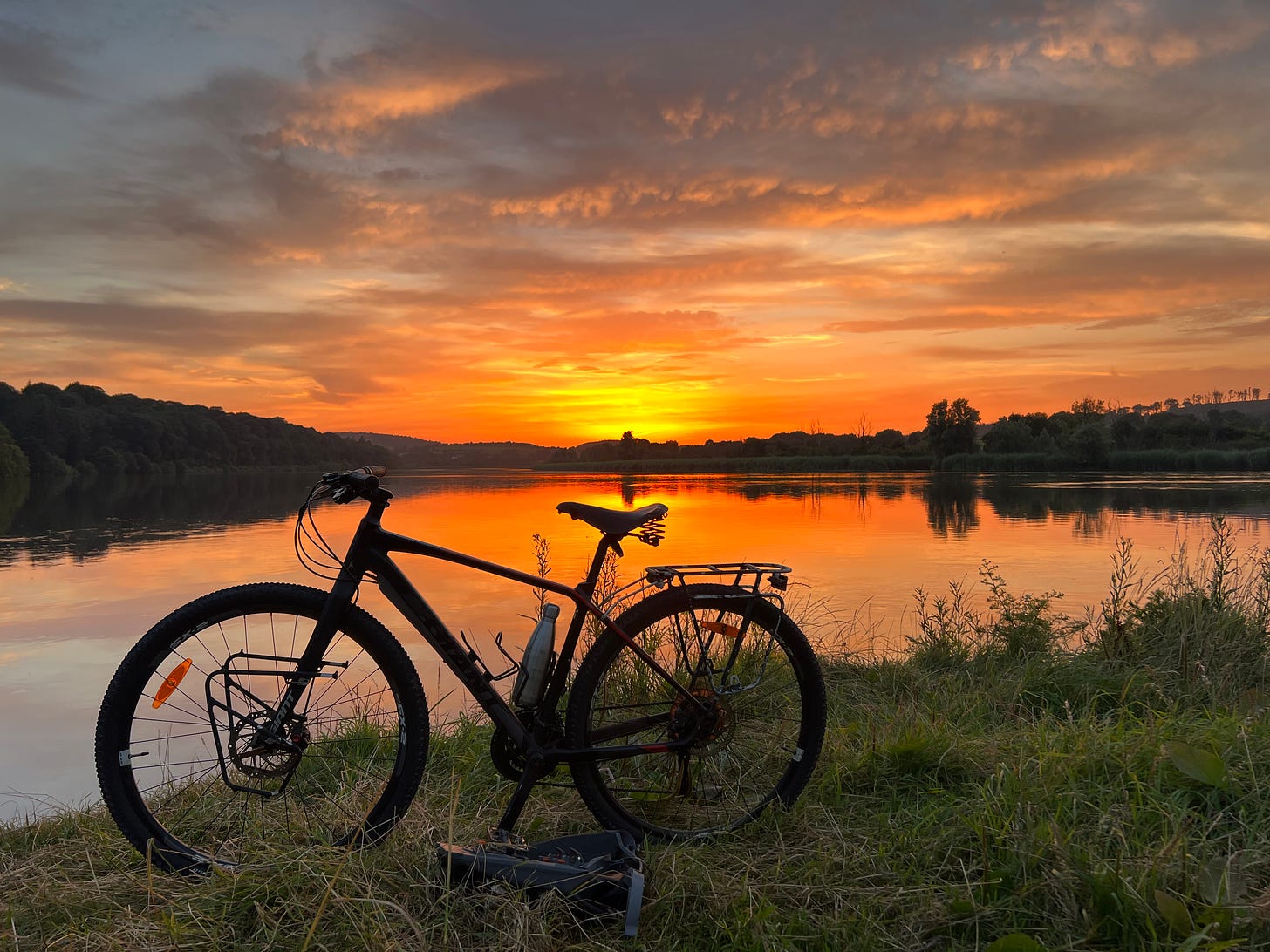
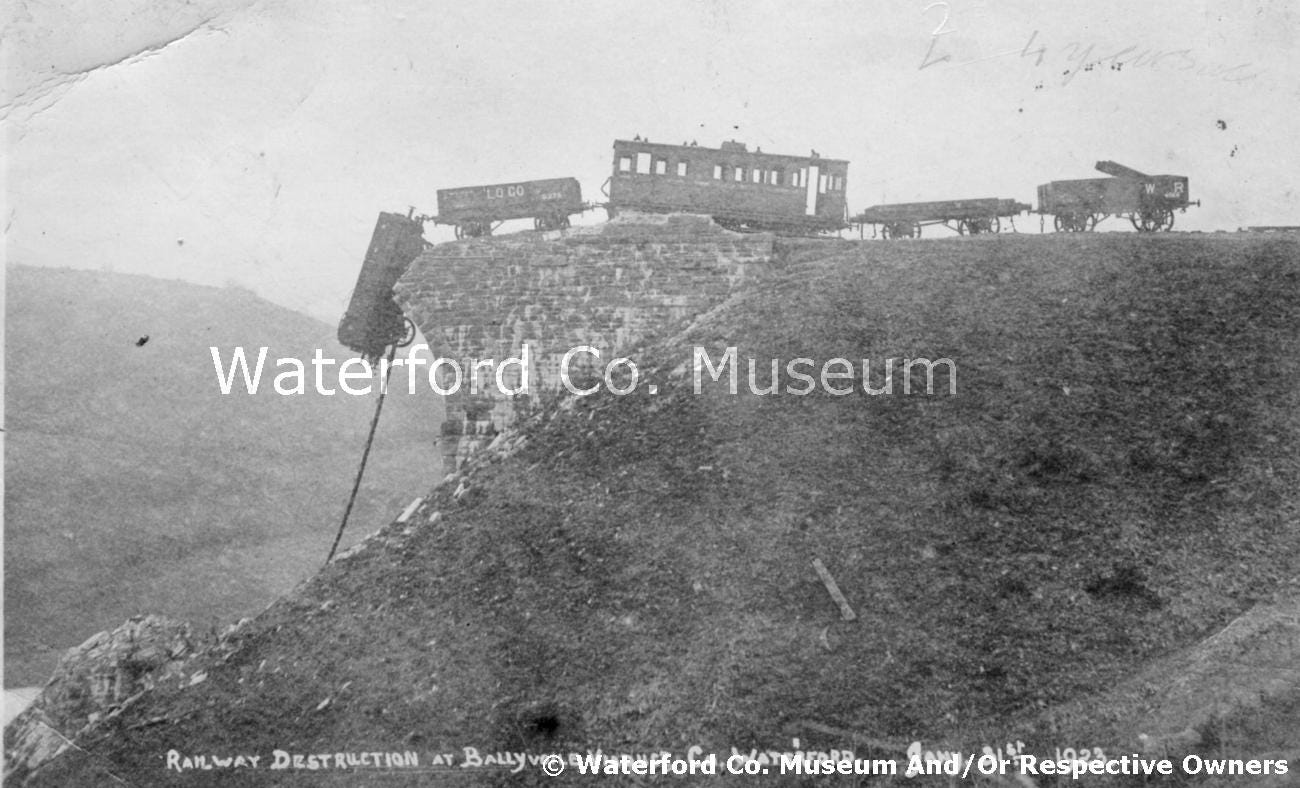
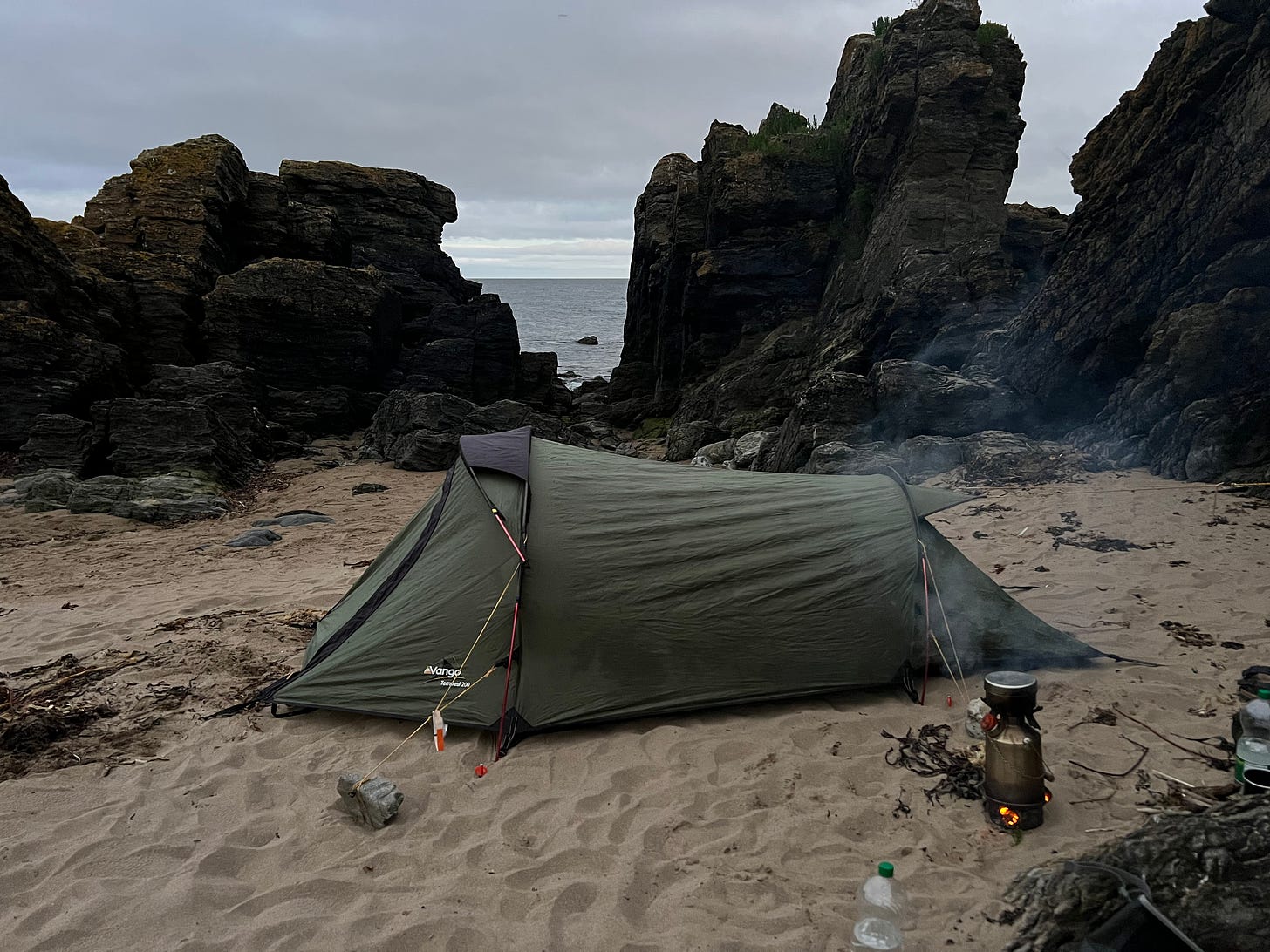
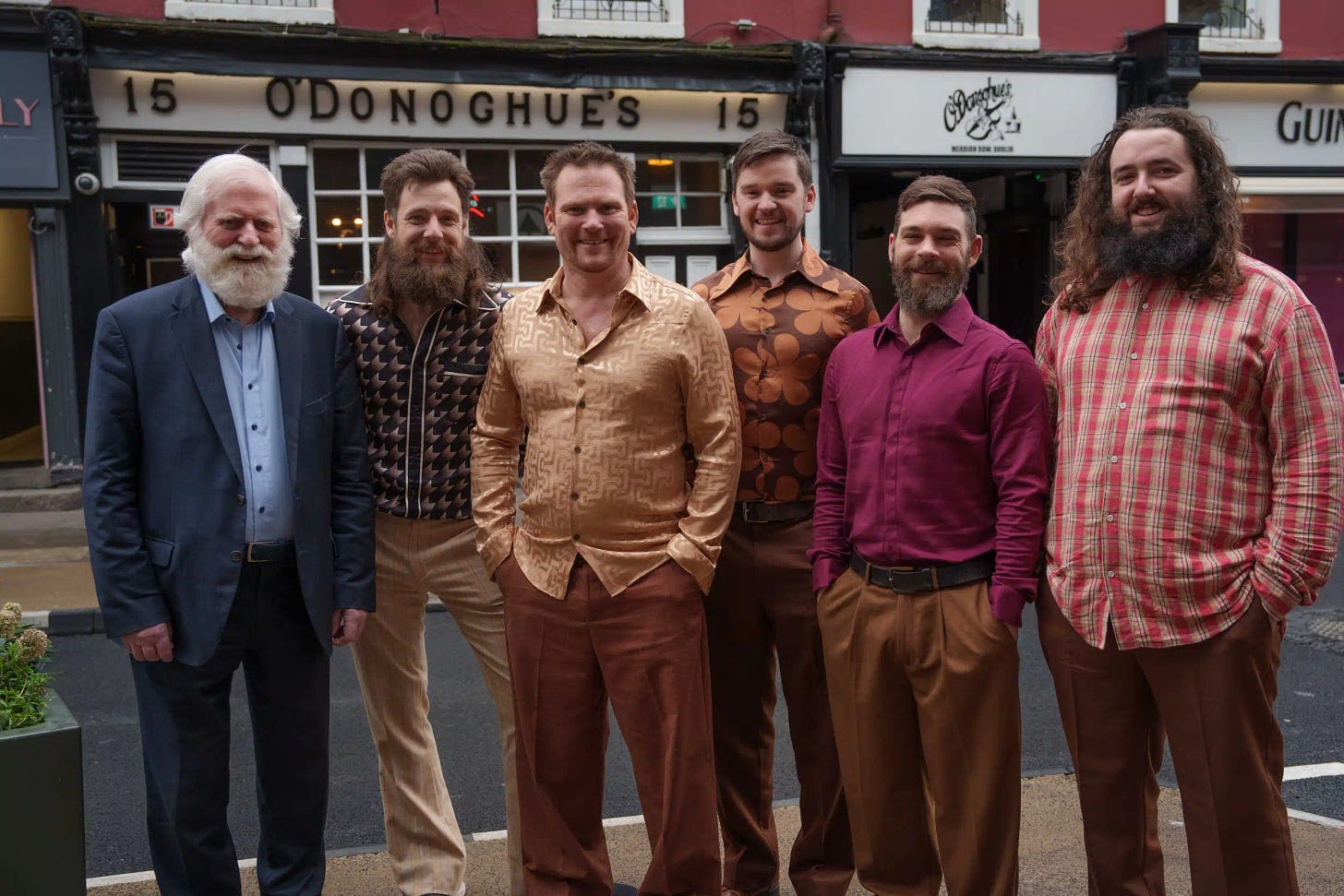





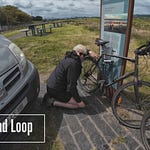

Share this post